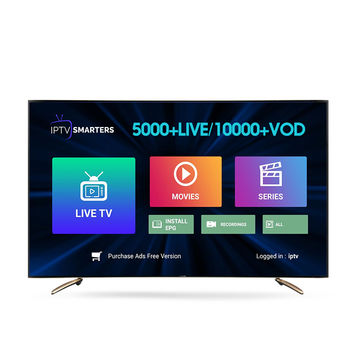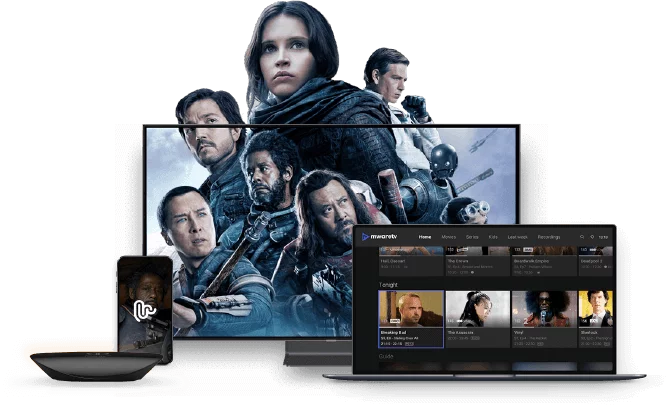Join the Streaming Change: IPTV Subscription for Limitless Entertainment
Join the Streaming Change: IPTV Subscription for Limitless Entertainment
Blog Article
Just How IPTV Functions: A Step-by-Step Overview to Internet Method Television Modern Technology
Internet Protocol Tv (IPTV) has actually transformed the means we eat tv content, using a new world of opportunities with the power of the internet. Comprehending the complexities of just how IPTV works can clarify the modern technology that drives this cutting-edge form of media shipment. From the fundamental principles of IPTV to the complicated procedure of content distribution, each action plays an important duty in making sure a smooth watching experience. In this guide, we will certainly uncover the hidden devices that make IPTV an interesting fusion of technology and home entertainment.
IPTV Fundamentals
In understanding IPTV basics, it is critical to grasp the fundamental workings of this innovation in providing tv material over the internet. IPTV, which means Internet Method Television, utilizes Internet Protocol (IP) networks to transfer tv material to users' gadgets. Unlike conventional methods of relaying television web content via cord or satellite signals, IPTV streams media with high-speed internet links.

Furthermore, IPTV permits interactive capacities, such as video clip as needed (VOD) and digital program overviews (EPG), enhancing the customer experience by giving even more control and flexibility in accessing material. Overall, recognizing the essentials of IPTV establishes the foundation for exploring its advanced functionalities and the benefits it offers to modern tv intake.
Material Delivery Refine
Reliable content shipment in IPTV systems entails a well-structured process that makes sure seamless transmission of tv material over IP networks. The material delivery process in IPTV starts with the production of the video clip material, which is after that encoded right into digital style ideal for IP transmission. This inscribed content is after that firmly saved on servers referred to as media web servers. When a customer demands certain web content, the IPTV system retrieves the requested data from the media servers and provides it to the visitor's gadget over the web.

Middleware Capability
With the assimilation of middleware, IPTV systems gain boosted capability that streamlines individual interaction and content monitoring. One of the vital functions of middleware in IPTV his explanation is to make it possible for personalized user experiences by providing features such as interactive program overviews, video-on-demand solutions, interactive marketing, and customer choices monitoring.

Gadget Compatibility
Provided the essential function of middleware in making it possible for seamless interaction and content management in IPTV systems, a critical facet to take into consideration is the compatibility of tools used for accessing the IPTV solutions. Device compatibility is crucial for making certain a smooth individual experience and optimal performance when accessing IPTV material.
In the context of IPTV, gadget compatibility refers to the capacity of a tool to efficiently engage with the IPTV solution, show content appropriately, and support the required protocols and codecs for streaming video content over the internet. Different devices, such as wise Televisions, set-top boxes, smart devices, tablet computers, and computers, might have varying degrees of compatibility with IPTV services.
To make certain a smooth viewing experience, it is vital for individuals to choose tools that work with the details IPTV solution they are utilizing. In addition, IPTV company must supply assistance for a large range of tools to deal with the diverse needs of their customer base. By prioritizing gadget compatibility, both users and provider can boost the general IPTV experience.
Top Quality of Solution (QoS)
Thinking about the vital duty of keeping a high standard of performance and dependability in IPTV systems, guaranteeing constant Top quality of Service (QoS) continues to be a fundamental element of the individual experience. QoS in IPTV refers to the ability of the system to supply content with minimal interruptions, high resolution, and quickly filling times.
Company use QoS devices such as website traffic prioritization, buffering, and mistake modification to maintain a secure IPTV service. By prioritizing IPTV web traffic over pop over to this web-site much less time-sensitive information, suppliers can guarantee smooth playback also during top usage hours. Buffering helps make up for network variations, while mistake improvement strategies boost data honesty.
Constant monitoring and optimization of QoS specifications are necessary to adjust to changing network problems and individual demands. Ultimately, a robust QoS structure is crucial for providing a smooth and pleasurable IPTV experience to users.
Conclusion
In conclusion, IPTV runs with the transmission of television content over web protocol networks. High quality of Solution plays a vital role in keeping the effectiveness and reliability of IPTV services - IPTV subscription.
Report this page